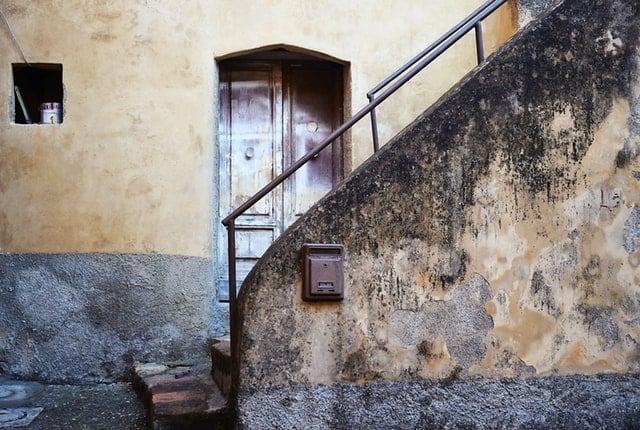Selling old homes for one euro is not an easy task. Even though many villages across Italy have successfully launched the scheme, there are others which have not fared so well.
This is mainly because the owners of abandoned houses were impossible to track down and the bureaucratic obstacles to dispose of the buildings proved huge.
So, instead, they’ve come up with winning alternatives to lure new people and breathe new life into their depopulating communities.
The towns of Carrega Ligure in Piedmont, Latronico in Basilicata, Biccari in Puglia and Troina in Sicily have launched websites to showcase cheap, renovated homes, and have opened real estate agencies employing legal and technical experts to support interested buyers in contacting old owners who have abandoned their family homes.
“We attempted in 2014 to sell stone mountain cottages for one euro, but over the past decades the owners had all migrated beyond the Alps and we couldn’t get hold of them”, says Carrega Ligure mayor Luca Silvestri. “Also, the properties were divided among too many heirs which made things way too complicated.”
READ ALSO: The red flags to watch out for when buying an old house in Italy
“So we thought the best way was to help locals willing to offload their old homes by giving them an online platform, handled by village authorities, where they can either sell or rent the properties. Supply meets demand.”
Occasionally some stunning villas and farms, in pristine areas, are also put up for auction to the highest bidder.
Latronico and Biccari discovered that placing cheap homes on the market was a greater lure than trying to sell houses for one euro.
Both towns have now launched official websites where buyers can see photos, details, maps of available properties and even book a tour.

“Paradoxically, having given up on the €1 home project has turned out to be very successful,” says Latronico deputy mayor Vincenzo Castellano.
“You need to push the owners to dispose of their old properties, if it’s just for one euro they won’t even bother. But if the price is higher, it’s an incentive”,
Often, the one-euro scheme is just a bait to lure investors and revitalize the real estate market.
Montieri, in Tuscany, initially advertised old houses for one euro but then placed them on the market starting at €20.000.
Other spots have come up with appealing financial incentives to attract foreigners and reverse the dwindling population.
The remote Alpine village of Locana, in Piedmont, recently offered to pay up to 9,000 euros over three years to families willing to move in and take up residency amid the snowy peaks and green valleys, as long as they have at least one child and a minimum yearly salary of 6,000 euros.
READ ALSO: Italy heading for demographic ‘crisis’ as population set to shrink by a fifth
Meanwhile, the nearby town of Borgomezzavalle offers 1,000 euros for each newborn plus 2,000 euros to outsiders willing to start a business and register for VAT.
Badia Polesine also offers each family willing to settle down a one-off €1,000 incentive.
Several regions have implemented the so-called ‘residency income’, including Piedmont, Emilia Romagna and Molise, based on paying families up to €30.000 for three years to move to live in a rural, mountain or offbeat village with less than 2.000 residents and packed with empty homes.
Troina’s mayor Sebastiano Venezia even pays new owners to settle down for good: “If you buy a fully-renovated house in the town’s ancient district, and want to take up residency among us, the town hall will gift you up to 8,000 euros”.
Also, home buyers in Troina won’t pay property and city services taxes for three years and are entitled to free kindergarten for their children and free school shuttle. Plus, there are ‘restyle bonuses’ of up to €20,000 available for ‘green’ renovations of old cheap homes.
READ ALSO:
- ‘We bought the cheapest house in Piedmont and live mortgage free’
- The ups and downs of buying a property for retirement in an Italian hilltop town
- Why Italians aren’t snatching up their country’s one-euro homes
In Cabella Ligure, a tiny village in Piedmont, buyers of cheap homes get tax breaks for renovations and get to pay lower property tax even if it’s their second home.
Discounted rentals are another great alternative. In an attempt to attract newcomers, Santa Fiora in Tuscany pays digital nomads up to 50 percent of their rent, for up to €200 euros, for long-term stays of up to 6 months.
Rentals in the village are quite low, in the range of €300-€500 monthly, so remote workers could end up paying as little as €150 per month.
“We have a brand new website where, along with details of available rentals, we’ve also put everything useful an outsider might need to live here and feel at home like a local: contacts of plumbers, babysitters, doctors, electricians and food delivery shops”, says mayor Federico Balocchi.
The mayor however stresses that remote workers must show proof that they’ll actually be working, and not just holidaying under the Tuscan sun: “They need to forward to the Comune, by registered PEC email, a detailed plan of the project they’re working on, or a letter from their employer saying they’ll be working remotely for a while”.
READ ALSO: Will Italy really pay you to move to its ‘smart working’ villages?
Foreigners who’d like to do business in Santa Fiora, for example by opening a B&B or restyling an old cottage into a hostel, could be granted up to €30.000. And there’s even a ‘baby bonus’ of up to €1,500 euros for each newborn.
Balocchi explains: “there are no visa requirements whatsoever for EU nationals, however for non-EU nationals visas are needed if they intend to work here.”
“They do not need the visa if they come for just three months as tourists and rent a house to look at the town, to get a feel for the village”, he says.
In fact, all foreign nationals are eligible to benefit from these schemes, as there are no restrictions or quotas based on nationalities or countries of origin




 Please whitelist us to continue reading.
Please whitelist us to continue reading.
Member comments